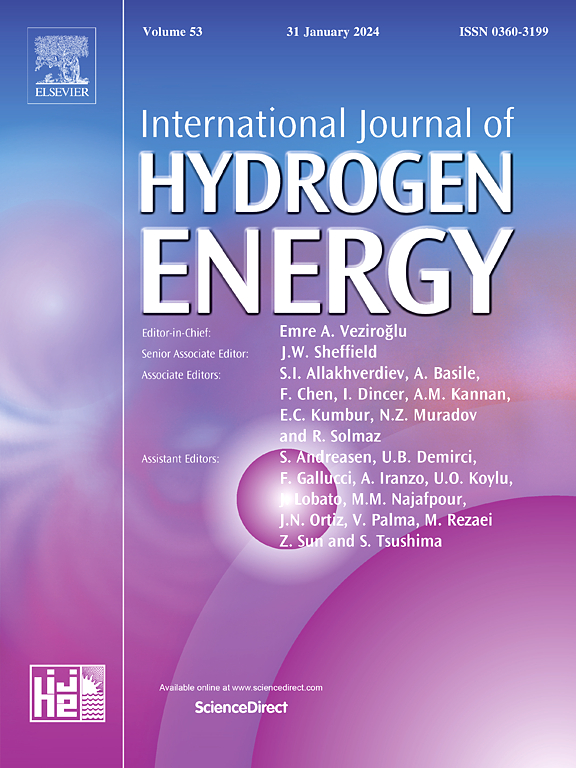Metabolic engineering of Clostridium pasteurianum for enhanced biohydrogen production
IF 8.1
2区 工程技术
Q1 CHEMISTRY, PHYSICAL
引用次数: 0
Abstract
Biohydrogen offers a promising, eco-friendly, and efficient approach to hydrogen production. Metabolic engineering of Clostridium pasteurianum DSM525, a promising biohydrogen-producing strain, is essential to enhance hydrogen yield for practical applications. To overcome the low transformation efficiency, we optimized DNA dosage, methylation, and ultrasound-assisted electroporation, achieving 7.5 × 102 CFU/μg DNA—sufficient for genetic engineering. Tunable regulation of hydrogenase was achieved for the first time using a newly constructed expression plasmid, and overexpression of endogenous hydrogenase genes (C00280, C37830, C07060-70, RS16520) significantly enhanced hydrogen production. The optimal additive mix, 25 ppm Fe3O4 nanoparticles, 70 ppm riboflavin, 25 ppm humic acid, 40 ppm Ni2+, and 50 ppm Fe2+, enhanced hydrogen metabolism. Under these conditions, C. pasteurianum overexpressing hydrogenases C00280 and RS16520 showed the highest hydrogen accumulation amount, with 6.18- and 6.87-fold increases over the wild type. The dual strategy integrating genetic engineering and hydrogen-promoting additives provides a foundation for efficient biohydrogen production.

巴氏梭菌的代谢工程促进生物制氢
生物氢提供了一种有前途的、环保的、高效的制氢方法。巴氏梭菌(Clostridium pasteuranum DSM525)是一种很有前途的生物产氢菌株,其代谢工程对提高产氢率具有重要意义。为了克服转化效率低的问题,我们对DNA用量、甲基化和超声辅助电穿孔进行了优化,达到7.5 × 102 CFU/μg DNA -足以用于基因工程。利用新构建的表达质粒首次实现了对氢化酶的可调调控,过表达内源性氢化酶基因(C00280、C37830、C07060-70、RS16520)显著提高了产氢量。最佳添加剂组合为25 ppm Fe3O4纳米颗粒、70 ppm核黄素、25 ppm腐植酸、40 ppm Ni2+和50 ppm Fe2+,可增强氢代谢。在此条件下,过表达加氢酶C00280和RS16520的巴氏杆菌的氢气积累量最高,分别比野生型增加6.18倍和6.87倍。基因工程与促氢添加剂相结合的双重策略为高效产氢奠定了基础。
本文章由计算机程序翻译,如有差异,请以英文原文为准。
求助全文
约1分钟内获得全文
求助全文
来源期刊

International Journal of Hydrogen Energy
工程技术-环境科学
CiteScore
13.50
自引率
25.00%
发文量
3502
审稿时长
60 days
期刊介绍:
The objective of the International Journal of Hydrogen Energy is to facilitate the exchange of new ideas, technological advancements, and research findings in the field of Hydrogen Energy among scientists and engineers worldwide. This journal showcases original research, both analytical and experimental, covering various aspects of Hydrogen Energy. These include production, storage, transmission, utilization, enabling technologies, environmental impact, economic considerations, and global perspectives on hydrogen and its carriers such as NH3, CH4, alcohols, etc.
The utilization aspect encompasses various methods such as thermochemical (combustion), photochemical, electrochemical (fuel cells), and nuclear conversion of hydrogen, hydrogen isotopes, and hydrogen carriers into thermal, mechanical, and electrical energies. The applications of these energies can be found in transportation (including aerospace), industrial, commercial, and residential sectors.
 求助内容:
求助内容: 应助结果提醒方式:
应助结果提醒方式:


